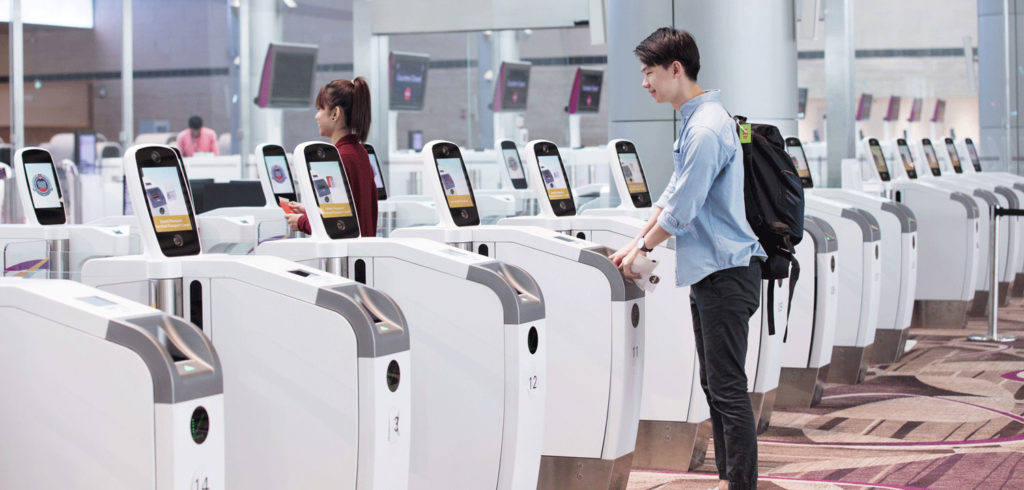With passenger traffic expected to double by 2037, it will be increasingly difficult for the air transportation community to handle traffic in a way that is satisfactory for travelers. Expanding airports’ infrastructure will prove difficult too. Biometrics may be the answer, with its potential to help streamline passenger flow with unrivalled accuracy, says Emmanuel Wang, VP of border control and passenger flow facilitation, IDEMIA.
At the start of every journey, passengers have to enroll themselves in the system, which means presenting their ID and travel documents. After that, it is not smooth sailing, however. They then have to present the same documents at least another couple of times at the border and upon boarding. Wouldn’t it be simpler for passengers to pull out their document only once and then enjoy a document-free journey?
It would, of course, but the task is harder than it looks. Today, the three major stakeholders (governments, airports and airlines) each operate in a particular zone and each have a specific system in place. For a smoother passenger journey, we think that these systems should be able to coordinate with each other. Interoperability of airport stakeholders’ systems is crucial if passengers are to enjoy a smooth, document-free journey.
Benefits for all stakeholders
First, exactly what does interoperability mean? It is the ability to exchange and communicate information readable by all stakeholders, such as passenger information, between various systems. If someone travels from Paris to Singapore via Dubai, interoperability means that passengers need enroll only once at Paris Airport, and be seen and identified without further action from the passenger at Dubai and Singapore. Interoperability is one of the answers to better management of the expected growth in passenger traffic. The process relies on the passengers validating their identity through an accurate and secure way: biometrics.
This is where IDEMIA comes into play. Through biometrics, a unique passenger identifier is generated. This identifier will remain the passenger’s token of identification until the end of their journey. In order for the different systems (airport, airline and government) to be accessed easily, IDEMIA creates an ID management platform that is interoperable, scalable and independent. What’s more, it is easy to integrate with existing IT platforms in the air travel ecosystem as it follows IATA recommendations for common use interfaces. Why? Because ensuring independence by design for private biometrics data management is the best way to be interoperable with all and robust to any security audit.
With embedded data protection and a proven privacy by design approach, it ensures compliancy with regulations as well as fast identification for a better and smoother travel experience at all touchpoints. Through interoperability, all stakeholders remain in control of their systems, while passengers can enjoy a seamless journey.
IATA’s One ID initiative advocates for a complete system interoperability, due to its many advantages, which include:
- It brings seamless travel to passengers because it eliminates repetitive processes and reduces the number of touchpoints, which in turn generates shorter queues and reduces waiting times.
- It can improve staff productivity by reducing time spent on manual ID checks. What’s more, it can identify bottlenecks in real time to re-route passengers, thus enabling smart queuing and optimizing efficiency.
- At borders, governments will enjoy enhanced security through the safest and most accurate way of identifying passengers: biometrics.
Interoperability is a crucial enabler toward the paperless journey that IDEMIA wants to see. Ultimately the goal is to offer passengers and visitors the easiest experience while increasing the level of security at borders.
The spirit of innovation that IDEMIA represents and our expertise in the field are key enablers for both airlines and airports in bring greater satisfaction to their passengers and strengthening their loyalty.


